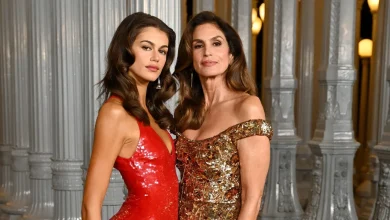Recall, Redux? Democrats and Republicans Bring Back Familiar Arguments in Proposition 50 Battle

But Jessica Millan Patterson, who is chairing the No Campaign and previously ran the state Republican Party, said the Democratic strategy of attacking Trump is tired.
“They don’t have a playbook. They have one play and they play that every single time,” she said.
Patterson said a large swath of the electorate remains undecided and a range of voters — including disaffected Democrats and independents — are open to the argument the No side is making.
“This is far less partisan, despite what the Yes side is trying to do,” she said. “We talk about these lines that have been drawn by Democrats in a back room with very little public participation and D.C. lobbyists and map drawers that no one can name, that is when people are like this is fishy, this is shady, and I don’t want anything to do with it.”
So while Democrats lean into Proposition 50 as an answer to Trump, Patterson said Republicans — just like in the 2021 recall campaign — are banking on Newsom’s unpopularity with more conservative voters. The message:
“Gavin Newsom is redrawing these districts as a partisan power grab, not because he’s trying to fix a problem because we didn’t have a problem to fix,” she said.
That’s a smart move, said GOP strategist Rob Stutzman, who is not involved in either campaign.
Republican Assembly member James Gallagher speaks during a press conference ahead of a meeting of the California State Assembly at the California State Capitol on Aug. 21, 2025, in Sacramento, California. (Justin Sullivan/Getty Images)
“Newsom isn’t just unpopular with Republicans, he actually triggers them,” said Stutzman, president of Stutzman Public Affairs. “The Republican motivation on this is Newsom. As much as you’re getting Democrats to turn out to vote against Trump, the Republican turnout mechanism is Newsom.”
DeBoo didn’t disagree.
“Republicans are pretty dug in,” he said “They may not be Trump people, but they have their feelings about Democratic leadership.”
Stutzman said both sides’ tactics make sense. Democrats, who hold a 20 point registration advantage over Republicans in the state, are simply trying to turn out their base and capitalize on Trump’s highly negative reputation here. Republicans are trying to shore up their base and attract other voters who are turned off by Newsom. The governor’s approval rating in an August poll was 51% — up from 46% in the spring and largely driven by Democrats and independent voters excited by his aggressive posture against Trump.
Just 9% of GOP voters gave the governor high marks in that poll — compared to 77% of Democrats.
“They have a huge plurality of Democrat voters that they just want to turn out,” Stutzman said. “It’s what we call a base election.”
Democrats may have also benefited politically from something that didn’t happen: Former Gov. Arnold Schwarzenegger, who campaigned for the independent redistricting commission when it was created more than a decade ago, has come out against Proposition 50 but not hit the campaign trail.
Former Gov. Arnold Schwarzenegger at Town and Gown of USC on Sept. 15, 2025, in Los Angeles, California. (Juliana Yamada/Los Angeles Times via Getty Images)
Stutzman said Schwarzenegger’s lukewarm involvement — he has spoken out against the measure on TV and at at least one event, but not worked with the No on 50 campaign — makes sense given he’s not a fan of the president.
“Schwarzenegger is a critic of Trump, so he’s not exactly gonna feed the Republican base or be the face that they necessarily want to see, even though they may agree with him on this,” said Stutzman, who worked for Schwarzenegger when he was governor.
But the No side has been able to use Schwarzenegger’s appearances in their advertising, which Stutzman said could still be an effective tool in attracting some centrist or independent voters.
Early ballot returns show equal shares of Democrats and Republicans have already cast their votes early — but with the Democrats’ numerical advantage, that amounts to nearly twice as many votes for redistricting so far.
Those who haven’t voted yet will surely be hearing more about Proposition 50 as Nov. 4 approaches. It’s already ranking as one of the most expensive ballot fights in state history — with nearly $150 million raised on both sides — and there are still several weeks left until voting ends.
While voters are deciding whether to approve new maps, it may feel more like they’re really being asked to choose between Newsom and Trump.





